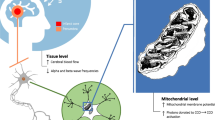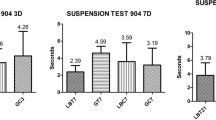Abstract
Development of drugs and devices for the treatment of stroke is not exempt from current translational research standards, which include Stroke Treatment Academic Industry Roundtable (STAIR) criteria and RIGOR guidelines. Near-infrared laser therapy (NILT) was developed to treat stroke in an era when STAIR criteria were not adhered to, thus NILT was not optimized in multiple species, nor was it optimized for efficacy across barriers in translational animal models before proceeding to expensive and extensive clinical trials. Moreover, the majority of rodent studies did not adhere to RIGOR guidelines. This ultimately led to failure in the NeuroThera Effectiveness and Safety Trial-3. Because NILT remains a promising therapeutic approach to treat stroke, we designed a systematic study to determine laser light penetration profiles across the skull of four different species with increasing skull thickness: mouse, rat, rabbit, and human.
Our study demonstrates that NILT differentially penetrates the skulls. There is especially extensive attenuation of light energy penetration across the human calvaria, compared with animal skulls, which suggests that the power density setting used in stroke clinical trials may not have optimally stimulated neuroprotection and repair pathways. The results of our study suggest that NILT cannot be sufficiently optimized in “small” animals and directly translated to humans because of significant variances of skull thickness and penetration characteristics across species. NILT neuroprotection should be further studied using a research design that endeavors to incorporate human skull characteristics (thickness) into the development plan to increase the probability of success in stroke victims.
Access this chapter
Tax calculation will be finalised at checkout
Purchases are for personal use only
Similar content being viewed by others
References
Chung H, Dai T, Sharma SK, Huang YY, Carroll JD, Hamblin MR (2012) The nuts and bolts of low-level laser (light) therapy. Ann Biomed Eng 40:516–533
Detaboada L, Ilic S, Leichliter-Martha S, Oron U, Oron A, Streeter J (2006) Transcranial application of low-energy laser irradiation improves neurological deficits in rats following acute stroke. Lasers Surg Med 38:70–73
De Taboada L, Yu J, El-Amouri S, Gattoni-Celli S, Richieri S, McCarthy T, Streeter J, Kindy MS (2011) Transcranial laser therapy attenuates amyloid-beta peptide neuropathology in amyloid-beta protein precursor transgenic mice. J Alzheimers Dis 23:521–535
Desmet KD, Paz DA, Corry JJ, Eells JT, Wong-Riley MT, Henry MM, Buchmann EV, Connelly MP, Dovi JV, Liang HL, Henshel DS, Yeager RL, Millsap DS, Lim J, Gould LJ, Das R, Jett M, Hodgson BD, Margolis D, Whelan HT (2006) Clinical and experimental applications of NIR-LED photobiomodulation. Photomed Laser Surg 24:121–128
Drochioiu G (2010) Laser-induced ATP formation: mechanism and consequences. Photomed Laser Surg 28:573–574
Eells JT (2003) Therapeutic photobiomodulation for methanol-induced retinal toxicity. Proc Natl Acad Sci U S A 100:3439
Fagan SC, Lapchak PA, Liebeskind DS, Ishrat T, Ergul A (2013) Recommendations for preclinical research in hemorrhagic transformation. Transl Stroke Res 4:322–327
Farfara D, Tuby H, Trudler D, Doron-Mandel E, Maltz L, Vassar RJ, Frenkel D, Oron U (2015) Low-level laser therapy ameliorates disease progression in a mouse model of Alzheimer’s disease. J Mol Neurosci 55(2):430–436
Hacke W, Schellinger PD, Albers GW, Bornstein NM, Dahlof BL, Fulton R, Kasner SE, Shuaib A, Richieri SP, Dilly SG, Zivin J, Lees KR; NEST 3 Committees and Investigators (2014) Transcranial laser therapy in acute stroke treatment: results of neurothera effectiveness and safety trial 3, a phase III clinical end point device trial. Stroke 45:3187–3193
Huang YY, Chen AC, Carroll JD, Hamblin MR (2009) Biphasic dose response in low level light therapy. Dose Response 7:358–383
Karu T (2010) Mitochondrial mechanisms of photobiomodulation in context of new data about multiple roles of ATP. Photomed Laser Surg 28:159–160
Lampl Y, Zivin JA, Fisher M, Lew R, Welin L, Dahlof B, Borenstein P, Andersson B, Perez J, Caparo C, Ilic S, Oron U (2007) Infrared laser therapy for ischemic stroke: a new treatment strategy: results of the NeuroThera Effectiveness and Safety Trial-1 (NEST-1). Stroke 38:1843–1849
Landis SC, Amara SG, Asadullah K, Austin CP, Blumenstein R, Bradley EW, Crystal RG, Darnell RB, Ferrante RJ, Fillit H, Finkelstein R, Fisher M, Gendelman HE, Golub RM, Goudreau JL, Gross RA, Gubitz AK, Hesterlee SE, Howells DW, Huguenard J, Kelner K, Koroshetz W, Krainc D, Lazic SE, Levine MS, Macleod MR, McCall JM, Moxley RT 3rd, Narasimhan K, Noble LJ, Perrin S, Porter JD, Steward O, Unger E, Utz U, Silberberg SD (2012) A call for transparent reporting to optimize the predictive value of preclinical research. Nature 490:187–191
Lapchak PA (2010) Taking a light approach to treating acute ischemic stroke patients: transcranial near-infrared laser therapy translational science. Ann Med 42:576–586
Lapchak PA (2010) Translational stroke research using a rabbit embolic stroke model: a correlative analysis hypothesis for novel therapy development. Transl Stroke Res 1:96–107
Lapchak PA (2012) Transcranial near-infrared laser therapy applied to promote clinical recovery in acute and chronic neurodegenerative diseases. Expert Rev Med Devices 9:71–83
Lapchak PA (2013) Fast neuroprotection (fast-NPRX) for acute ischemic stroke victims: the time for treatment is now. Transl Stroke Res 4:704–709
Lapchak PA (2013) Recommendations and practices to optimize stroke therapy: developing effective translational research programs. Stroke 44:841–843
Lapchak PA, Araujo DM, Zivin JA (2004) Comparison of Tenecteplase with Alteplase on clinical rating scores following small clot embolic strokes in rabbits. Exp Neurol 185:154–159
Lapchak PA, De Taboada L (2010) Transcranial near infrared laser treatment (NILT) increases cortical adenosine-5'-triphosphate (ATP) content following embolic strokes in rabbits. Brain Res 1306:100–105
Lapchak PA, Salgado KF, Chao CH, Zivin JA (2007) Transcranial near-infrared light therapy improves motor function following embolic strokes in rabbits: an extended therapeutic window study using continuous and pulse frequency delivery modes. Neuroscience 148:907–914
Lapchak PA, Wei J, Zivin JA (2004) Transcranial infrared laser therapy improves clinical rating scores after embolic strokes in rabbits. Stroke 35:1985–1988
Lapchak PA, Zhang JH, Noble-Haeusslein LJ (2013) RIGOR guidelines: escalating STAIR and STEPS for effective translational research. Transl Stroke Res 4:279–285
Lapchak PA, Boitano PD, Butte PV, Fisher DJ, Hölscher T, Ley EJ, et al. (2015) Transcranial Near-Infrared Laser Transmission (NILT) Profiles (800 nm): Systematic Comparison in Four Common Research Species. PLoS ONE 10(6):e0127580. doi:10.1371/journal.pone.0127580
Leung MC, Lo SC, Siu FK, So KF (2002) Treatment of experimentally induced transient cerebral ischemia with low energy laser inhibits nitric oxide synthase activity and up-regulates the expression of transforming growth factor-beta 1. Lasers Surg Med 31:283–288
Liang HL, Whelan HT, Eells JT, Wong-Riley MT (2008) Near-infrared light via light-emitting diode treatment is therapeutic against rotenone- and 1-methyl-4-phenylpyridinium ion-induced neurotoxicity. Neuroscience 153:963–974
Lyden P, Lu M, Jackson C, Marler J, Kothari R, Brott T, Zivin J, The National Institute of Neurological Disorders and Stroke rt PASSG (1999) Underlying structure of the National Institutes of Health Stroke Scale: results of a factor analysis. Stroke 30:2347
Naeser MA, Hamblin MR (2011) Potential for transcranial laser or LED therapy to treat stroke, traumatic brain injury, and neurodegenerative disease. Photomed Laser Surg 29:443–446
Naeser MA, Saltmarche A, Krengel MH, Hamblin MR, Knight JA (2011) Improved cognitive function after transcranial, light-emitting diode treatments in chronic, traumatic brain injury: two case reports. Photomed Laser Surg 29:351–358
Oron A, Oron U, Chen J, Eilam A, Zhang C, Sadeh M, Lampl Y, Streeter J, DeTaboada L, Chopp M (2006) Low-level laser therapy applied transcranially to rats after induction of stroke significantly reduces long-term neurological deficits. Stroke 37:2620–2624
Saver JL (2006) Time is brain–quantified. Stroke 37:263–266
Saver JL, Albers GW, Dunn B, Johnston KC, Fisher M (2009) Stroke Therapy Academic Industry Roundtable (STAIR) recommendations for extended window acute stroke therapy trials. Stroke 40:2594–2600
Tajiri N, Dailey T, Metcalf C, Mosley YI, Lau T, Staples M, van Loveren H, Kim SU, Yamashima T, Yasuhara T, Date I, Kaneko Y, Borlongan CV (2013) In vivo animal stroke models: a rationale for rodent and non-human primate models. Transl Stroke Res 4:308–321
Turner R, Jickling G, Sharp F (2011) Are underlying assumptions of current animal models of human stroke correct: from STAIRS to high hurdles? Transl Stroke Res 2:138–143
Uozumi Y, Nawashiro H, Sato S, Kawauchi S, Shima K, Kikuchi M (2010) Targeted increase in cerebral blood flow by transcranial near-infrared laser irradiation. Lasers Surg Med 42:566–576
Voie A, Dirnbacher M, Fisher D, Holscher T (2014). Parametric mapping and quantitative analysis of the human calvarium. Computerized medical imaging and graphics: the official journal of the Computerized Medical Imaging Society. 38(8):675–682. doi: 10.1016/j.compmedimag.2014.06.022. pmid:25069430.
Wan S, Parrish JA, Anderson RR, Madden M (1981) Transmittance of nonionizing radiation in human tissues. Photochem Photobiol 34:679–681
Wang MM, Xi G, Keep RF (2013) Should the STAIR criteria be modified for preconditioning studies? Transl Stroke Res 4:3–14
Zivin JA, Albers GW, Bornstein N, Chippendale T, Dahlof B, Devlin T, Fisher M, Hacke W, Holt W, Ilic S, Kasner S, Lew R, Nash M, Perez J, Rymer M, Schellinger P, Schneider D, Schwab S, Veltkamp R, Walker M, Streeter J (2009) Effectiveness and safety of transcranial laser therapy for acute ischemic stroke. Stroke 40:1359–1364
Conflict of Interest Statement
This study utilized a K-Laser model K-1200 device. K-Laser, Inc. did not have an editorial influence on the study design or scientific content of this article.
Disclosures and Acknowledgments
Dr. Lapchak serves as editor-in-chief of the Journal of Neurology & Neurophysiology and associate editor of Translational Stroke Research. The scientific content of this work was not directly supported by the National Institutes of Health or any other funding source external to Cedars-Sinai Medical Center. He was supported in part by a U01 translational research grant NS060685. Paul D. Boitano has no disclosures.
Author information
Authors and Affiliations
Corresponding author
Editor information
Editors and Affiliations
Rights and permissions
Copyright information
© 2016 Springer International Publishing Switzerland
About this chapter
Cite this chapter
Lapchak, P.A., Boitano, P.D. (2016). Transcranial Near-Infrared Laser Therapy for Stroke: How to Recover from Futility in the NEST-3 Clinical Trial. In: Applegate, R., Chen, G., Feng, H., Zhang, J. (eds) Brain Edema XVI. Acta Neurochirurgica Supplement, vol 121. Springer, Cham. https://doi.org/10.1007/978-3-319-18497-5_2
Download citation
DOI: https://doi.org/10.1007/978-3-319-18497-5_2
Publisher Name: Springer, Cham
Print ISBN: 978-3-319-18496-8
Online ISBN: 978-3-319-18497-5
eBook Packages: MedicineMedicine (R0)




